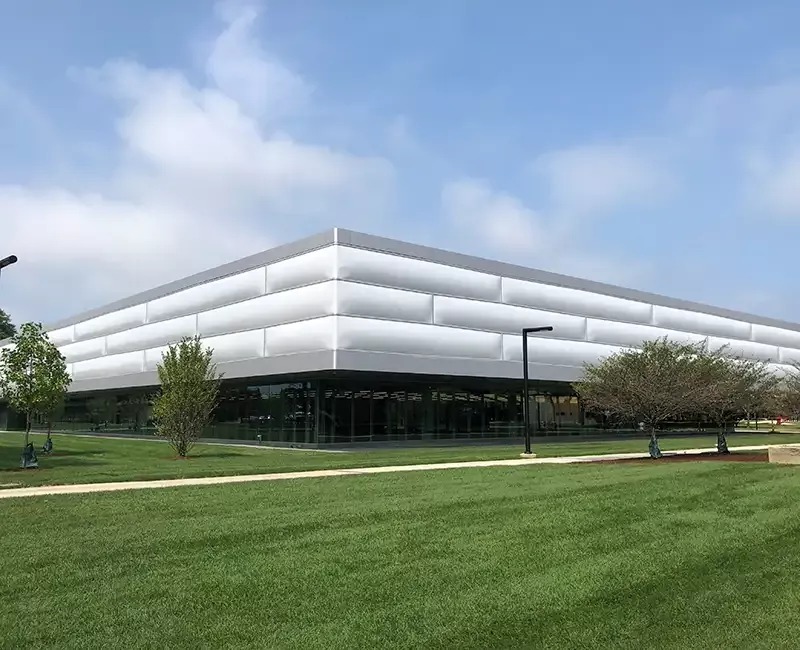’Functionality and Sustainability’ in an ‘Elegant Design Solution’
The design of the Ed Kaplan Family Institute for Innovation and Tech Entrepreneurship features technologically advanced building materials and systems, and adds a dramatic new presence to the university’s iconic campus designed by Ludwig Mies van der Rohe. The building provides flexible, adaptable teaching space for Illinois Tech’s project-based, interdisciplinary courses.
“The design for the Kaplan Institute is a thoughtful and sensitive contribution to Illinois Tech’s important architectural legacy yet is forward looking in its approach to the flexible and technologically advanced learning facilities needed today,” says John Ronan, the John and Jeanne Rowe Endowed Professor in Architecture at Illinois Tech and architect for the project.
According to Ronan, the design is also innovative in its own right, especially in its approach to sustainability. The second floor of the LEED Gold-designated building, which cantilevers over the ground floor to provide sun shading, is enclosed in a dynamic façade of ethylene tetrafluoroethylene (ETFE) foil cushions, the first use of its kind in Chicago. The dynamic ETFE façade can vary the amount of solar energy entering the building through sophisticated pneumatics, and at one percent the weight of glass gives the building a light, cloud-like appearance. Building systems are similarly advanced. Water-filled tubing embedded in a concrete-filled metal deck converts the building’s floor structure into a radiant heating and cooling system.
The building’s location is intentional and designed to draw students and faculty in from all directions. The horizontal, open, and light-filled building is similarly designed to encourage encounters between students and faculty across disciplines. Conceived as a hybrid of campus space and building, the innovation center is organized around two open-air courtyards through which visitors enter the building and “collision nodes,” which encourage chance meetings and information exchange across departments and disciplines.
The courtyards serve as the building’s “eyes” and “lungs,” bringing in natural light and ventilation to create a comfortable and healthy interior environment for collaboration—and a continuous connection with nature. Circulation inside the building is indirect and dispersed, designed again to promote collaboration and interaction. Large, open, horizontal floor plates allow visual connection to multiple spaces at one time while openings in the floor plate allow visual access from floor to floor to foster the feeling of a single collaborative community of users.


